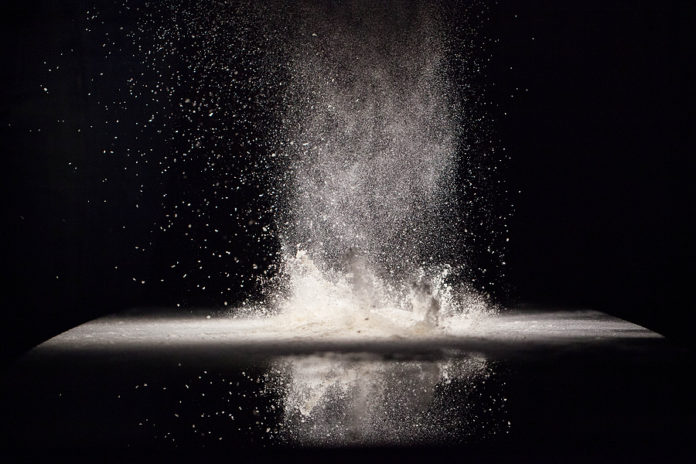
By Rick Kreczmer, RoboVent
Do you need to conduct a dust hazard analysis (DHA) for your facility? How do you get it done? Once it’s completed, what do you do with the results? There is still a lot of confusion in the food industry about the DHA process. Here are answers to all your DHA questions.
When is a DHA required for food processors and bakers?
NFPA 652, “Standard on the Fundamentals of Combustible Dust,” requires that all facilities handling or producing combustible dust complete a Dust Hazard Analysis, or DHA. While NFPA standards are not themselves enforceable, the Occupational Health and Safety Administration (OSHA) relies on these standards when conducting enforcement activities under the Combustible Dust National Emphasis Program. In addition, compliance with NFPA 652 may be required under state and local fire codes, which are typically structured around NFPA 1, “Fire Code,” and/or the International Fire Code. Both of these codes require facilities to perform a DHA in accordance with Chapter 7 of NFPA 652.
The DHA requirement was put in place in 2016 with a deadline of September 7, 2020, for completion if a DHA had not already been conducted. NFPA 652 requires a DHA:
- For new installations or expansions/upgrades to existing installations.
- Every five years, even if no changes have been made.
Why do food processors and bakers need to complete a DHA?
Many of the dusts created by the food industry are highly combustible—in fact, there are more combustible dust incidents reported in the food and agriculture sector than in any other industry. Grain and flour dusts, sugar dust, cornstarch, cocoa powder, and many other dust types found throughout the food industry are highly explosible under the right conditions. A DHA is the best way to protect people and facilities from the dangers of a combustible dust explosion and reduce legal liability.
What does the DHA involve?
A dust hazard analysis is a systematic review to identify potential hazards, evaluate existing safeguards, and recommend additional safeguards or process improvements to reduce combustion hazards. NFPA 652 does not specify a particular format, but common elements of the DHA generally include the following.
- Material characterization: The first step of a DHA is often determining the material characteristics of the dust or dusts involved. In particular, it is important to know how explosive the material is and how much damage could be done if an explosion should occur. Dust is classified into one of four ST Classes (ST0 – ST3) based on tests to determine explosion indices (KST and Pmax, measures of the speed of pressure rise and maximum pressure rise within a closed vessel). These measures are sample-specific and depend not only on chemical composition but also particle size distribution, moisture content, morphology, and other variables. It may be possible to use published values for dust that is substantially similar to the dust produced in your facility. However, when in doubt, it is advisable to have independent lab testing done for your specific dust.
- Process characterization: The next step is to look for places in your facility that create the conditions where an explosion can occur. A dust explosion requires five critical elements, collectively known as the explosion pentagon: fuel (the dust), oxygen, an ignition source, dispersion (creation of a dust cloud), and containment in an enclosed area. Process characterization evaluates each step of the production process to determine which hazards are present. Where do dust clouds tend to form (for example, places where powdered bulk material is poured, dumped, mixed, or otherwise disturbed)? Where does dust come in contact with heat, open flames, or mechanical equipment that could produce a spark or present a risk of overheating? Where is dust contained (e.g., enclosed conveyor systems, storage bins and silos, mixers/blenders, etc.)? A detailed, step-by-step analysis of production processes will identify nodes where multiple elements of the explosion pentagon are present.
- Evaluation of existing safeguards: The DHA will also note existing safeguards, such as your dust collection system, housekeeping standards, hazard communication plan, administrative controls, and any other safeguards in place. It will also note whether or not existing safeguards are adequate to reduce combustible dust risks. Part of this evaluation may include detailed measurements of pre-mitigation conditions, such as airborne dust levels at different points in the facility, the presence of dust accumulation on surfaces, and operating temperatures of equipment.
- Mitigation recommendations: Based on the process analysis and measurements of existing conditions, the DHA will make a set of recommendations specific to the facility. These may include process improvements (such as changing the operating parameters of a conveyance system to minimize dust cloud formation), engineering controls (such as upgrading the dust collection system), or administrative controls (such as new housekeeping processes or hazard communication).
- Verification: After recommended mitigations have been implemented, new measurements should be taken to ensure that they are meeting their targets. Have airborne dust levels been reduced? Is less dust accumulating on surfaces? Have dangerous containment conditions been removed? Have ignition sources been eliminated or otherwise safeguarded? The DHA should be considered a living document; it may take multiple rounds of mitigation and verification to ensure that all hazards have been properly addressed.
What do I do with my DHA when it is completed?
Companies are not required to submit the DHA to OSHA or any other regulatory body at the federal level. State and local statutes may vary, so make sure you know the requirements for your jurisdiction. Your insurance company may also want a copy. But generally, the only requirement is that you keep the document on file and are able to produce it if asked (for example, during a randomized OSHA inspection or if a complaint has triggered enforcement action). The DHA is a very important legal document that can help companies demonstrate their commitment to safety and defend their safety decisions if there is ever a question or incident.
But the most important thing companies need to do with their DHA is ensure that mitigation recommendations are carried out, monitored, and enforced. The DHA is not a document meant to be simply kept in a drawer. It is a living set of guidelines to be followed. Make sure that everyone who works around combustible dust or is responsible for health and safety fully understands and complies with the recommendations. And review the document on a regular basis to see if anything needs to be updated. The DHA can only protect your company if it is followed.
Who should conduct the DHA?
The rules for who can conduct a DHA are vague. NFPA 652 Section 7.2.2 simply says, “The DHA shall be conducted by a qualified person.” The Explanatory Material in Appendix A clarifies that the DHA is usually conducted by a team, and the team should include people who are familiar with:
- the hazards of combustible dust,
- the DHA process, and
- materials, processes, equipment, safety systems, operations, and emergency procedures at the site.
If you have staff on board who are well-versed in combustible dust safety and the DHA process, it is possible and allowable to complete the DHA in-house. However, most companies find that it is helpful to partner with a qualified engineering firm with combustible dust expertise. These experts know exactly what to look for when evaluating processes, equipment parameters, safety systems, and emergency procedures. They will work closely with people on your team who can provide insight into operations and specifications for processes and equipment.
If material characterization is required, this is done by an outside laboratory. Testing must be conducted using standardized ASTM equipment and methods.
What if I didn’t meet the 2020 deadline?
First, don’t panic! Many companies have gotten behind due to the COVID-19 pandemic (and the enforcers have, too). The best thing you can do is to start the process as soon as possible.
While there were no requirements to file the DHA with OSHA, if your company is audited and found not to have a DHA on file, there may be penalties and fines. Completing a DHA now will not guarantee that your company will not be penalized for failing to have one on file by the deadline, but the sooner you get started, the more you can minimize your exposure. Showing a good faith effort to bring your facility into compliance now will go a long way towards satisfying safety auditors.
More importantly, the sooner you complete your DHA and implement the recommendations, the safer your facility will be.
 Rick Kreczmer is an industrial air filtration industry veteran with more than 24 years of experience in executive management. As President of RoboVent, he has led the company through new product innovation and market initiatives to lay the foundation for continued growth and profitability in an evolving manufacturing environment.
Rick Kreczmer is an industrial air filtration industry veteran with more than 24 years of experience in executive management. As President of RoboVent, he has led the company through new product innovation and market initiatives to lay the foundation for continued growth and profitability in an evolving manufacturing environment.








